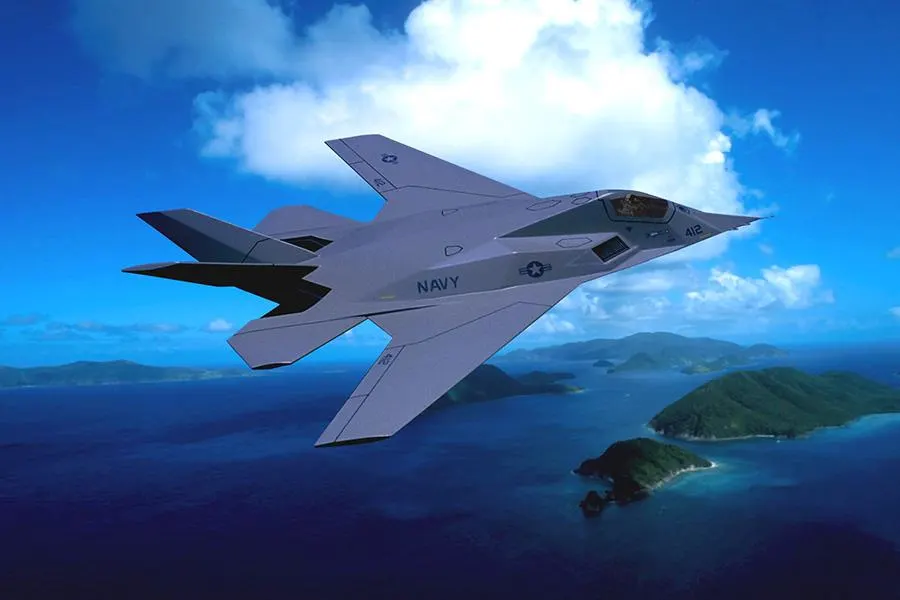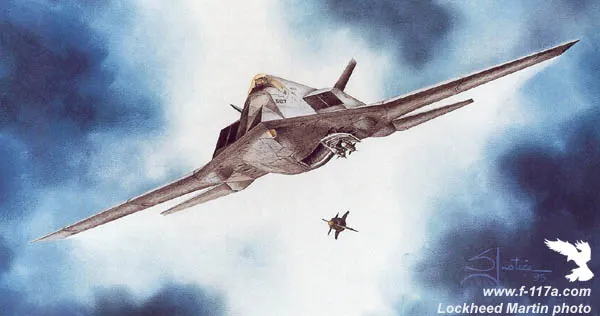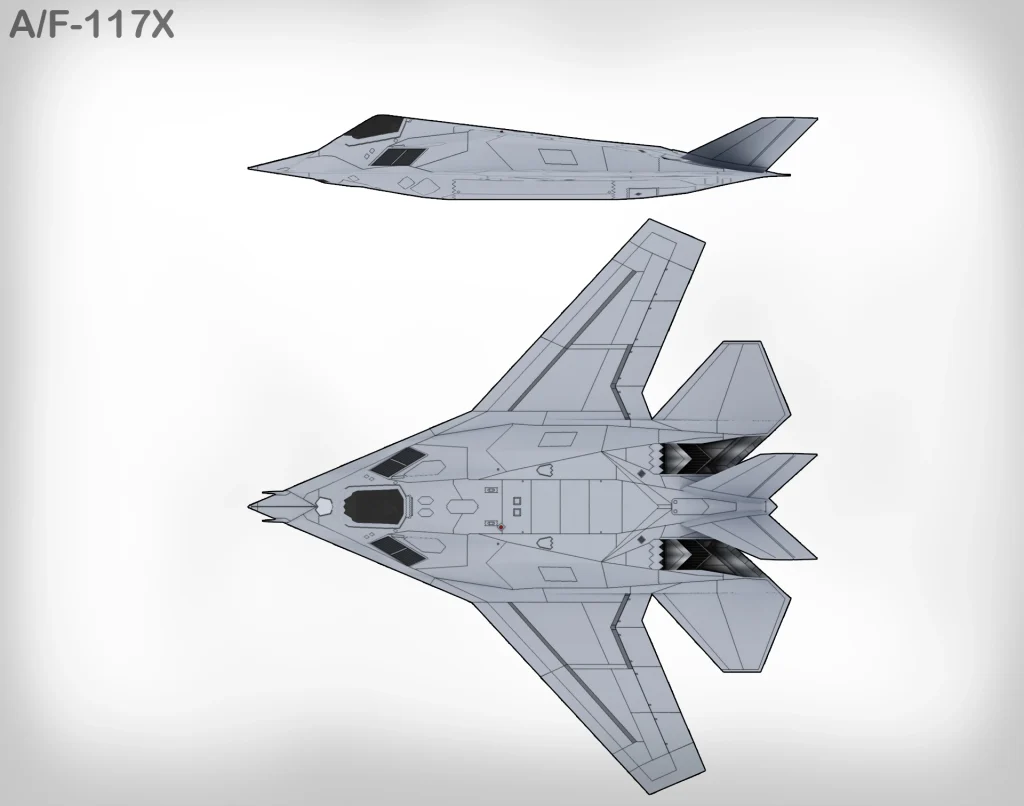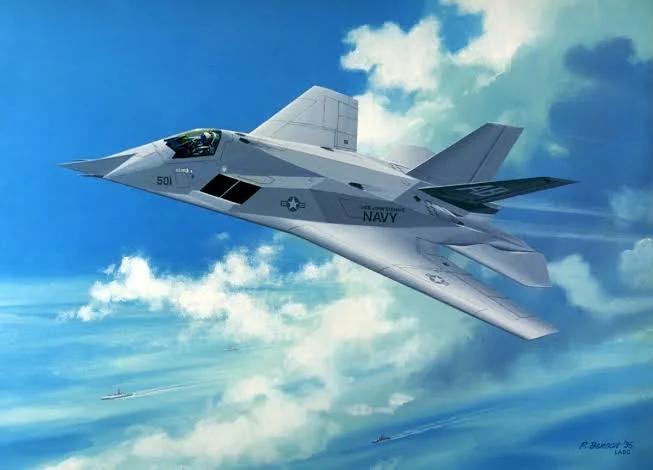The Origins of the F-117N
The F-117 Nighthawk was perhaps one of the ugliest yet most intriguing aircraft to emerge from Lockheed’s renowned Advanced Development Programs branch, commonly referred to as Skunk Works. The Nighthawk was part of a Special Access Program, or “black project,” which meant that its existence was suppressed and classified but to the highest levels of military and defense command.
In fact, the Nighthawk flew in active service for over six years before its existence became known with the initial publication of a slightly hazy photo of one of the Air Force’s Nighthawks. Two years later, civilians caught a peek of the strange-looking attack aircraft during a public display when two aircraft flew to Nellis AFB in broad daylight for one day.
The Nighthawk program was widely regarded as a highly successful foray into modern stealth aviation. Several lessons learnt, such as upgraded and advanced targeting systems and radar-absorbent materials and coatings, were applied to Lockheed Martin’s subsequent projects, the F-22 Raptor and the F-35 Lightning II.
When the end of Nighthawk production loomed in the early 1990s, Lockheed Martin proposed a new aircraft based on the Nighthawk to the Navy. It would be a subsonic stealth fighter/attack aircraft capable of operating on carriers, replacing the canceled Advanced/Fighter-Attack program from 1992.
Enter F-117N Seahawk
The F-117N dubbed the Seahawk, would keep the Nighthawk’s unique angular and multifaceted fuselage while flying with newer engines based on General Electric’s F414 turbofan, which had originally been intended to be used on the McDonnell Douglas A-12 Avenger II, an aircraft that would have replaced the A-6 Intruder but was canceled by the Department of the Navy during development.

The wings, which could be folded for storage on a carrier, would have a 42-degree sweep, as opposed to the Nighthawk’s 50-degree. The redesign called for stabilators and a “double-slotted” trailing edge, giving the aircraft better handling than its land-based counterpart, as well as a larger weapons bay that could carry air-to-air missiles.

The undercarriage would be modified to withstand the jarring impacts of landing on carriers, and a tailhook would be added in the rear, hidden in a recessed compartment to maintain stealth. Additionally, Lockheed Martin offered it as an alternative to JAST. However, the Seahawk was doomed to fail from the moment Lockheed executives proposed it to DoD officials. It was touted as a multi-purpose aircraft capable of performing a range of tasks rather than being limited to the attack role.

However, after a short deliberation, the DoD determined that investing in the hypothetical F-117N would divert critical resources away from what would later become the Joint Strike Fighter program. The Navy’s specifications for the JAST/JSF aircraft were significantly greater than what the F-117N could meet. Now, decades later, there is the F-35C, the aircraft that the Navy eventually chose to serve the mission that Lockheed had initially envisioned for the F-117N Seahawk.








